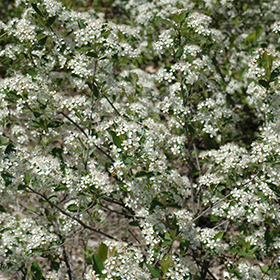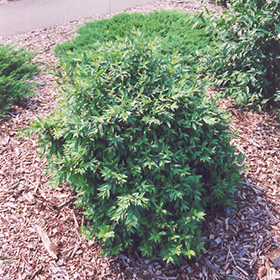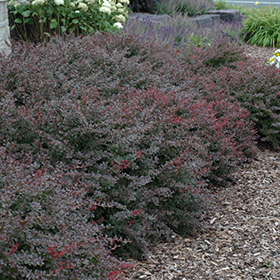Description
Growth & Care
| USDA Plant Hardiness Zone | 3a |
| Growth Rate | Slow |
| Recommended Pruning Method | Late Winter Pruning |
Foliage
| Foliage Type | Deciduous |
| Fall Color | Red |
| Plant Form | Upright Spreading |
Flowers
| Flower Period | Spring |
| Flower Color | White |
| Flower Fragrance | Unscented |
Additional Categories
| Additional Category | Chokeberry |
| Landscape Application | Massing, Garden, Naturalizing |
Details
Planting & Growing
Iroquois Beauty Black Chokeberry will grow to be about 5 feet tall at maturity, with a spread of 5 feet. It tends to be a little leggy, with a typical clearance of 1 foot from the ground, and is suitable for planting under power lines. It grows at a slow rate, and under ideal conditions can be expected to live for approximately 20 years.
This shrub should only be grown in full sunlight. It is an amazingly adaptable plant, tolerating both dry conditions and even some standing water. It is not particular as to soil type or pH, and is able to handle environmental salt. It is somewhat tolerant of urban pollution. This is a selection of a native North American species.
Landscape Attributes
Iroquois Beauty Black Chokeberry is a multi-stemmed deciduous shrub with an upright spreading habit of growth. Its average texture blends into the landscape, but can be balanced by one or two finer or coarser trees or shrubs for an effective composition.
This shrub will require occasional maintenance and upkeep, and is best pruned in late winter once the threat of extreme cold has passed. Gardeners should be aware of the following characteristic(s) that may warrant special consideration:
Suckering
Iroquois Beauty Black Chokeberry is recommended for the following landscape applications:
Mass Planting, General Garden Use, Naturalizing And Woodland Gardens
Ornamental Features
Iroquois Beauty Black Chokeberry features airy panicles of white flowers with brick red anthers at the ends of the branches in mid spring. It features an abundance of magnificent deep purple berries from late summer to late winter. It has dark green deciduous foliage. The glossy oval leaves turn an outstanding burgundy in the fall.





